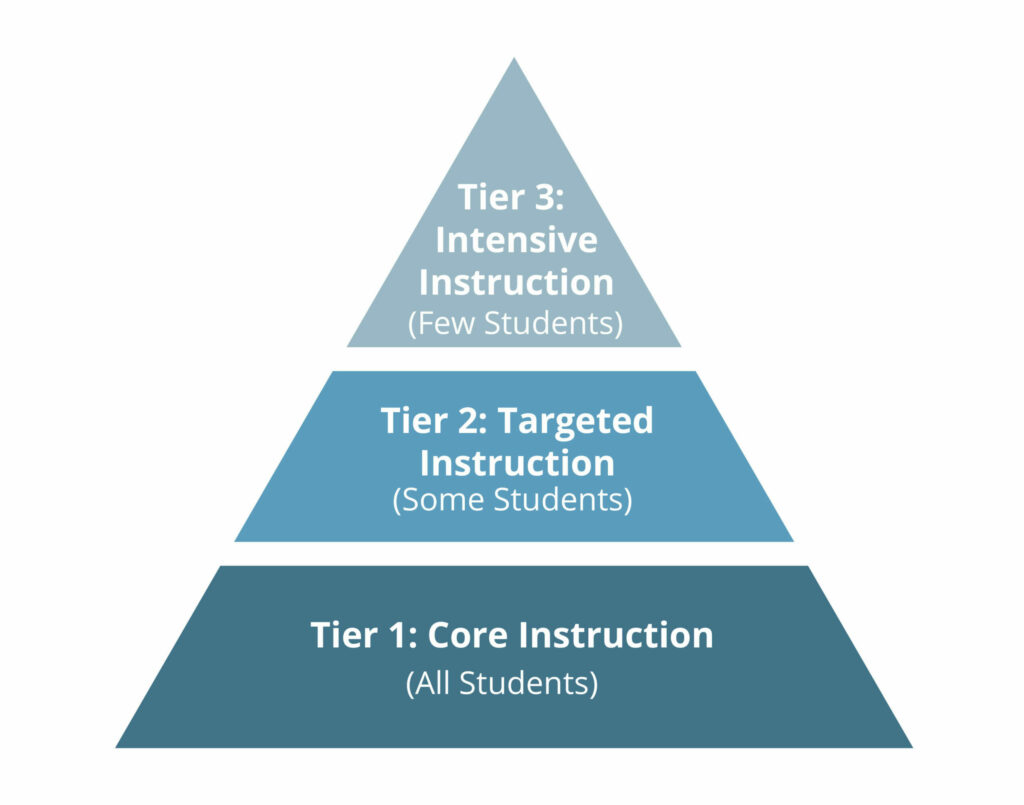Last Updated on September 28, 2022
 Listenwise’s design provides equitable educational opportunities for students with disabilities who have Individualized Education Plans (IEPs) and 504 accommodations.
Listenwise’s design provides equitable educational opportunities for students with disabilities who have Individualized Education Plans (IEPs) and 504 accommodations.
A Listenwise user from South Carolina said:
“I’m a Special Education teacher and I love the easy-to-use audio file and transcript—it has built-in accommodations for all students!”
Check out the list below to learn more about Listenwise’s audio and transcript features and other ways Listenwise supports students with IEP and 504 accommodations.
#1 Multimodal Brain Engagement
Often students are able to comprehend information at higher levels using audio stories than they would when reading text alone. Listenwise provides multimedia representations of information, allowing students to listen and read at the same time. While students are still mastering reading skills, listening to podcasts helps them develop comprehension strategies. This allows them to practice making inferences and identifying the main idea without the additional cognitive load of decoding words. Listening while reading also helps students make connections between oral language and printed spelling.
Moreover, neuroscience research indicates that listening to language activates systems in the brain that are responsible for sight, sound, motor control, and smell. This means that hearing about someone “walking upstairs or opening a can of tuna … actually activates parts of [the] brain that drive those very actions. This makes audio stories particularly engaging and memorable.
#2 Response to Special Education Intervention and Assessment (RTI)
Listenwise’s curriculum materials assist educators in providing students with special education interventions at increasing levels of support, with a variety of optional scaffolds. In whole-class, tier one instruction, teachers can use the teacher guides included in standards-aligned lessons to implement activities before, during, and after listening. The guide includes suggestions such as, “You may want to ask students to respond to the listening comprehension questions and share their responses with a partner, small group, or the whole class.” These helpful reminders recommend best practices for students with and without accommodations.
Our collection of over 3,000 podcasts, ranging in length from less than thirty seconds to about 8 minutes, offers educators an abundance of content to support supplemental instruction. Support is available for both small groups and individual students for tier-two and tier-three instruction.
One English Language Development teacher explained that timing was especially important in her tier-two instruction:
“My kids love the Weird News… I love them because they are short and engaging. Especially when I only have a half an hour to meet with my students, it’s enough time for us to be able to listen to it multiple times and still get the content.”
Teachers may want to filter searches by Lexile audio level and/or aligned standards to specifically target areas of need, while gradually changing the complexity level of the stories students hear over time. Listenwise offers embedded quizzes for frequent formative assessments, which provide valuable data to track student progress toward IEP goals. These auto-scored multiple-choice quizzes measure comprehension skills. These skills include recognizing literal meaning, identifying the main idea, making inferences, and understanding vocabulary in context. These comprehension skills apply across modalities, and improving listening comprehension improves reading comprehension.
#3 Cultivating Student Agency
Many Listenwise features empower students to make choices that personalize their own learning experiences at appropriate times. For example, students may choose to slow down the audio while they listen, listen a second time to a particular part of a story, or read along with the interactive transcript. Students also have access to the text-help toolbar. The toolbar can define selected words from the transcript or questions with written, spoken, or picture definitions and pronounce words, phrases, or paragraphs in English and Spanish.
#4 Representation in Podcasts
When we ask educators which student groups might see themselves reflected LEAST in their curriculum, students with disabilities are typically a top response. Research indicates instructional materials that validate students’ identities and experiences are critical to engagement and learning. This is why Listenwise intentionally selects podcasts with balanced views that reflect diverse perspectives.
We also want our curriculum materials to allow all students to walk in someone else’s shoes. Our Stories of People With Disabilities Collection highlights how individuals advocate for themselves, lead fulfilling lives, and combat stigmas surrounding ableism. Educators can also use the “Disabilities” topic tag to access more stories that illuminate the experiences of individuals who are neurodiverse or differently-abled. This support link offers additional tips for finding stories.
#5 Special Education Co-teaching
When a team of people is working together to help a student fulfill their potential, more than one person needs access to the student’s instructional materials and performance data. Listenwise’s co-teaching functionality allows primary teachers to add another teacher, such as a special education resource or inclusion teacher, to their classes to help manage students’ activity. Co-teachers can assign students quizzes and written assignments, update assignments and change due dates, and review student work and leave feedback. Visit our support site to learn how to add a co-teacher to your class on Listenwise.


